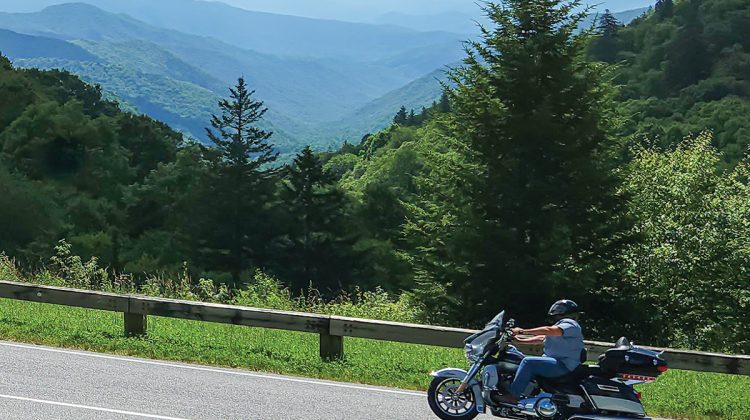
A morning breeze off the Oconaluftee River in Cherokee, North Carolina, eases the rising summer heat as I head north on U.S. 441. Like many fellow motorcyclists, I can’t resist the lure of riding across the Great Smoky Mountains on such a glorious day.
Taking 441 past the southern terminus of the Blue Ridge Parkway, I often encounter the herd of elk reintroduced to the park 20 years ago. No luck spotting them today. Good news is traffic is light – a rarity during the tourist season – and I can enjoy the winding road up to Newfound Gap, the spot where President Franklin D. Roosevelt dedicated the Smokies as a national park in 1940, several years after Congress created the park. Today, that spot draws thousands of visitors. I cruise through the crowded parking lot and decide to find a more peaceful roadside stop on the Tennessee side.
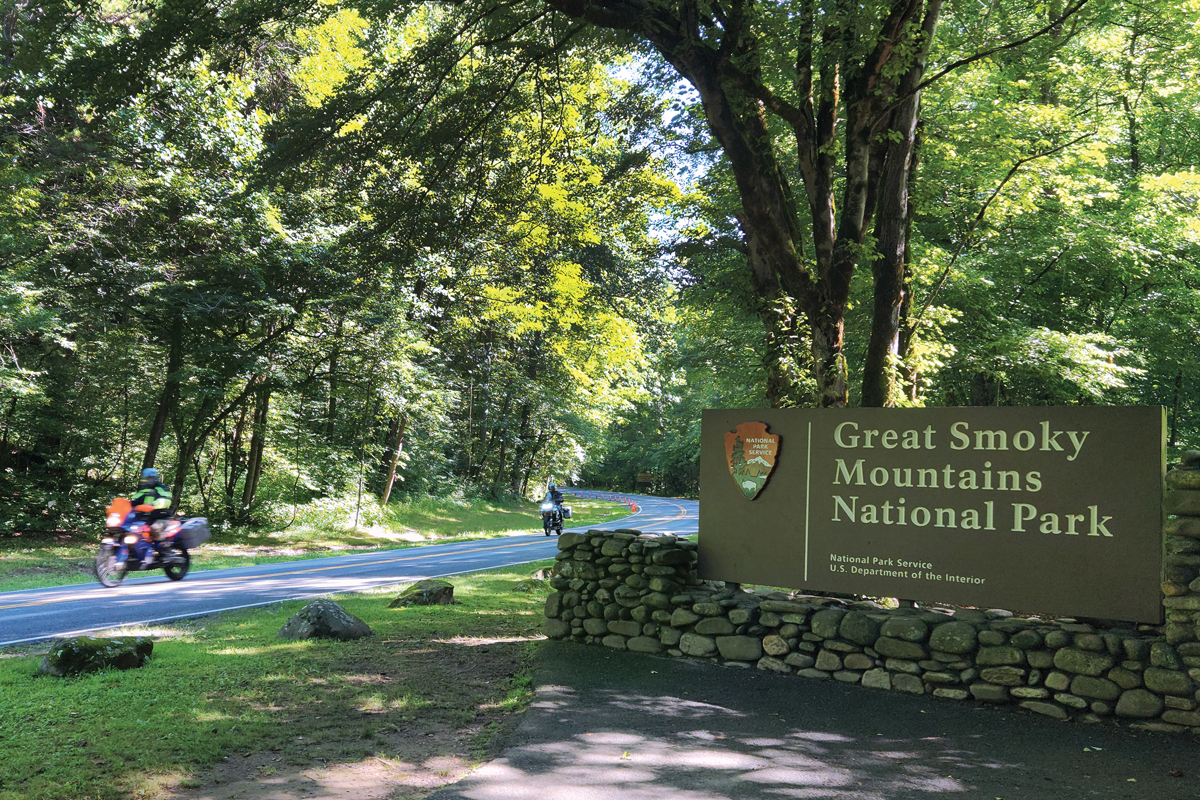
I cross into the Volunteer State, and the road becomes more twisty, the views more impressive. The temperature falls as the road climbs in elevation. Dark green fir trees tower above the lesser foliage. Soon I reach my favorite portion of the road, the loop where 441 crosses under itself. Just beyond, a pull-off makes a great spot to watch the namesake smoky mist flow over Chimney Tops.
The National Park Service reports 13 million visitors a year visit the Smokies, making it the most visited national park in the nation. I’ve heard people say the park is being “loved to death” given the traffic, environmental impact and general overcrowding of park facilities. As I relax in the shade admiring Chimney Tops, I notice the traffic congestion rising by the moment.
“It’s only going to get worse as the day wears on,” I tell myself. “Get back on the bike.”
With that, I flip up the kickstand and head toward the Sugarlands Visitor Center, where Fighting Creek and Little River Gorge roads head west deeper into the park. It will also allow me to escape the tourist traffic heading for downtown Gatlinburg.
My favorite part of riding motorcycles in the southern Appalachian Mountains is finding a roadway running along a river. These routes usually evolved from old animal trails or Native American paths. They have a charm, an identity, a history that traffic engineers haven’t erased in their mad quest for straight lines and level grades.
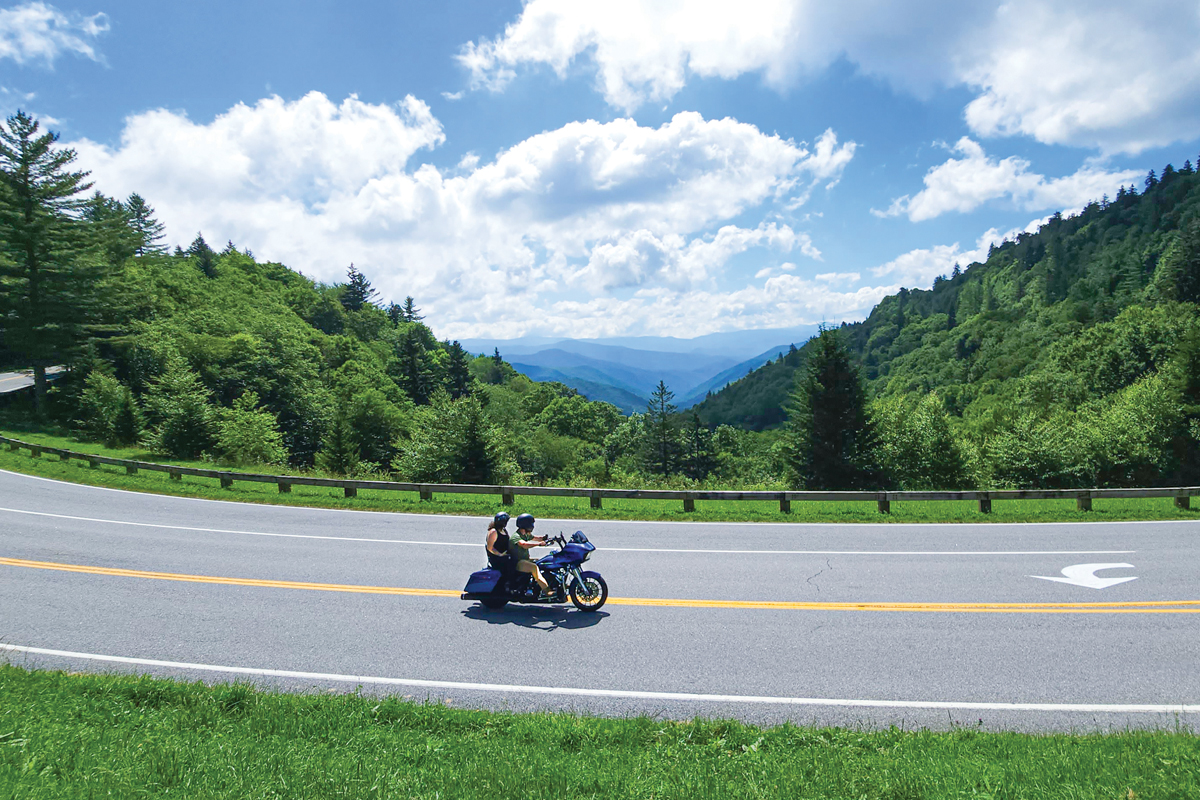
As expected, the road cuddles up next to Little River and flows with grace through the valley as a myriad of tributaries add to the cascading waterway. At The Sinks, a crowd of tourists gather to plunge into the refreshing cool water. Not far away, I catch a glimpse of Meigs Falls tumbling out of the underbrush to my left as the road continues to enthrall me.
Soon, the Townsend Entrance Road forces a choice. Straight ahead takes me to Cades Cove, a picturesque and popular spot in the Smokies. I’ve been there many times, so I choose to turn right, exit the park and head for a nearby attraction I haven’t seen.
Tuckaleechee Caverns
There are more than 10,000 caves in Tennessee, more than any other state, according to the National Speleological Society. The abundant limestone beneath the eastern half allows nature to create some spectacular underground cathedrals.
In Townsend, I spot the signs directing me to Tuckaleechee Caverns. In my motorcycle travels through Appalachia, I always try to visit a cave when possible. I’ve enjoyed them all: the monumental Mammoth Cave in Kentucky, Luray Caverns/Grand Caverns in the Shenandoah Valley, stunning Ruby Falls beneath Lookout Mountain in Chattanooga and the amazing Lost Sea just 50 miles from Townsend in Sweetwater, Tennessee.
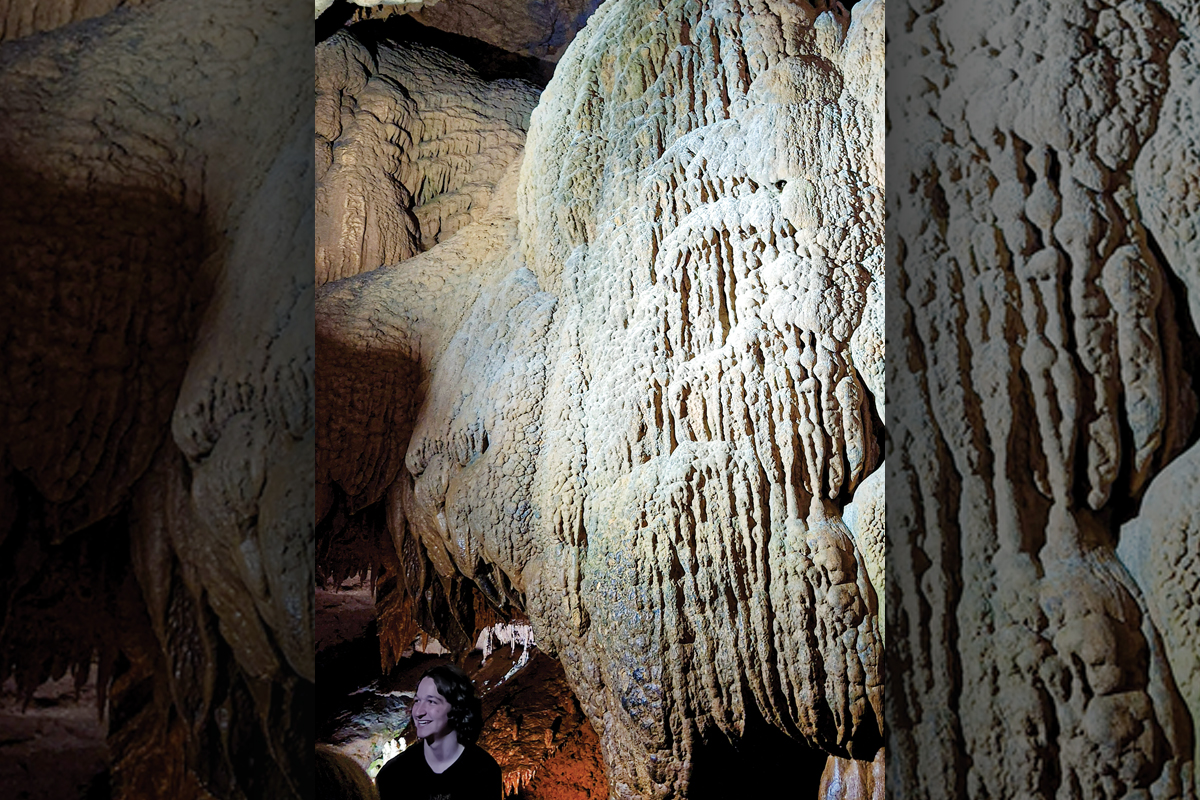
A few turns off U.S. 321 west of town brings me to the pastoral holler where Tuckaleechee Caverns awaits. Guided tours lead you down into the underworld, where the constant 56-degree temperature feels great after a sweat-filled day on the motorcycle.
“My grandfather opened this in 1953,” said Benjamin Vananba, whose family owns the cavern and nearby riding stables. “Our big room, you could just about build a football stadium in it.”
The 200-acre cave, which spreads under the Smokies to Cades Cove, features onyx formations and the tallest, two-tiered subterranean waterfall in the country at 210 feet, Vananba said.
“We also have the most sensitive seismic equipment on the planet installed by the United States military. The main objective is to keep an eye on North Korea, Russia, China and Iran to see if they are testing nuclear warheads. It can detect any atmospheric or subterranean nuclear blast anywhere around the world or the epicenter of any major earthquake on the planet from right here,” he said.
Originally established in 1978 to monitor earthquake activity, the sensors were upgraded to make the cavern an international monitoring station in 2006. It has provided continuous data via satellite link ever since, according to the Comprehensive Nuclear Test Ban Treaty Organization, the group tasked with monitoring nuclear treaty compliance.
In the lobby of Tuckaleechee Caverns, printouts of major seismic events are on display, including when the cavern’s equipment detected a series of earthquakes responsible for the deadly 2018 tsunami in Indonesia.
“It’s a beautiful cavern. It’s huge,” Vananba said. “We get a little over 100,000 visitors a year. It’s a gorgeous cavern with formations all over the place.”
Pigeon Forge/Gatlinburg
Emerging from the beautiful and temperate cave formations and underground streams of Tuckaleechee Caverns, I saddled up and turned back east along U.S. 321. My cruise through Cherokee this morning had me a bit nostalgic for those childhood vacation spots, so I decided to endure the heavy traffic and roam through Pigeon Forge and Gatlinburg, relishing all the times I spent there in my youth.
The towering array of mini-golf, waterslides and go-cart tracks shock my memory of Pigeon Forge. Entertainment options seem endless. The 1970s child in me would be completely overwhelmed and screaming, “I want to go there, and I want to go there, and I want to go there…”
Thanks to synchronized traffic lights, I catch mostly greens all the way to Gatlinburg. The narrower streets make for more stop-and-go clutch levering, but I’m determined to revisit some of the places that felt special in my youth.
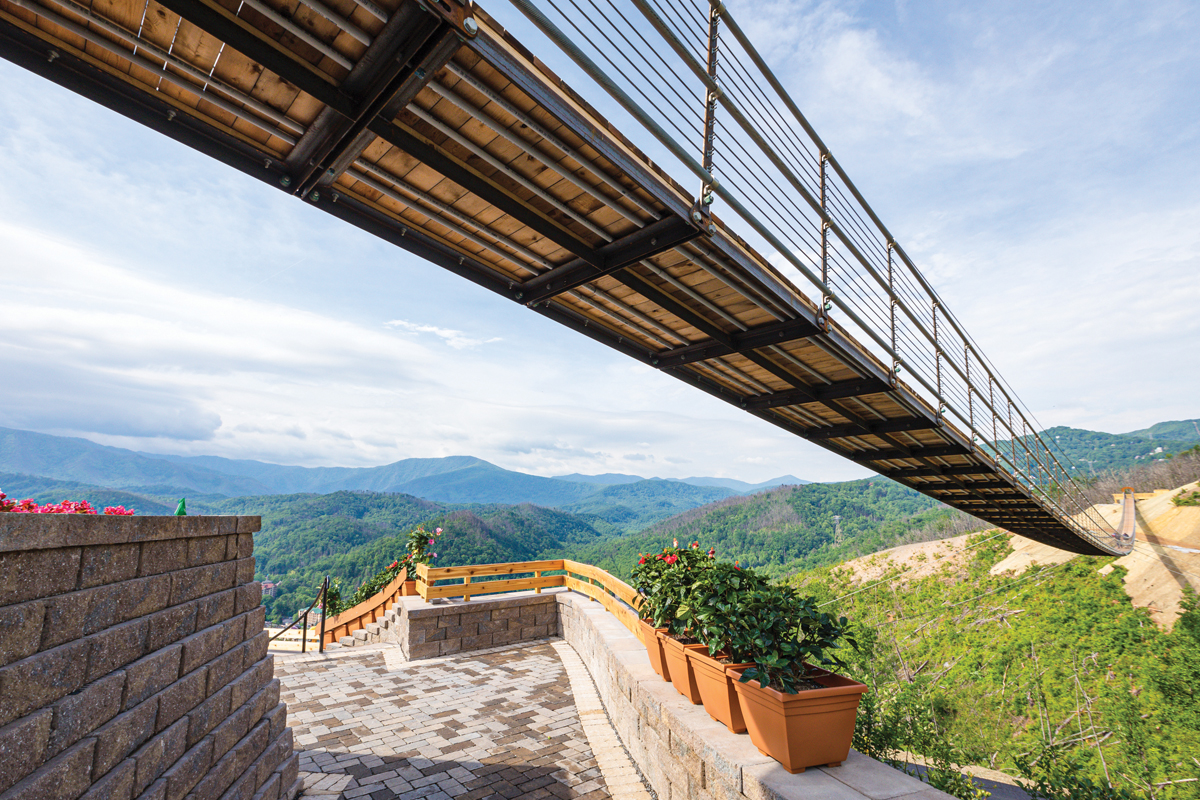
I’d make day trips to Gatlinburg when I was in high school and college. A car full of friends filling up a summer of fun with adventures. Funny, I don’t remember ever paying for parking back then. Certainly not $20. That was almost my whole gas, food, airbrushed T-shirt budget back then.
The town seems as vibrant and successful as ever. Kids excitedly darting along the sidewalk pleases me knowing they’re probably making fun memories that might motivate them to return decades later just to recapture a bit of that joy.
The Space Needle still towers 400-feet above downtown, and my childhood fear of looking out from the top makes my spine shiver for a second. The sound of arcade games and the crowded sidewalks lift my mood, even as I bake in the mesh riding jacket waiting for an endless stream of pedestrians to clear the crosswalk.
As a kid, I marveled at the tram to Ober Gatlinburg, now rebranded as Ober Mountain. This was one of my favorite snow skiing spots in my youth, not because of the runs or snow base, but it had a vibrancy I loved. I take the small backroad up to the top, an enjoyable motorcycle ride after navigating downtown traffic.
The resort seems quiet and uncrowded, understandable since we were months away from ski season. I roam the main building smiling at ghosts from my past. No music, no ice skaters in the big rink today. I savor a cold beer in the nearly empty tavern as I reminisce about those raucous youthful visits, my high-viz jacket the only thing remotely resembling the neon-and-pastel 1980s ski party flashing through my memory.
And I had to pay to park again.
Route 32 (It’s a secret)
I follow U.S. 321 out of Gatlinburg back toward my North Carolina home. I wasn’t planning the most direct route since I want to visit one of those secret roads motorcyclists only tell other trusted riders about.
Just south of Cosby, where most traffic turns north to join Interstate 40, I turn right on Tennessee Route 32. I first heard about this road years ago from another rider. It’s now a must ride anytime I’m passing through these parts.
The rural two-lane starts unassumingly. Traffic is almost always non-existent. As the road climbs toward the northwest corner of the Great Smokies National Park, the technical difficulty of turns increase. In a span of 17 miles, riders will make more than 120 turns, from sharp off-camber hairpins to quick sweepers. This road is an enthusiast’s dream, a road that when mentioned to other riders immediately boosts your motorcycling bona fides.
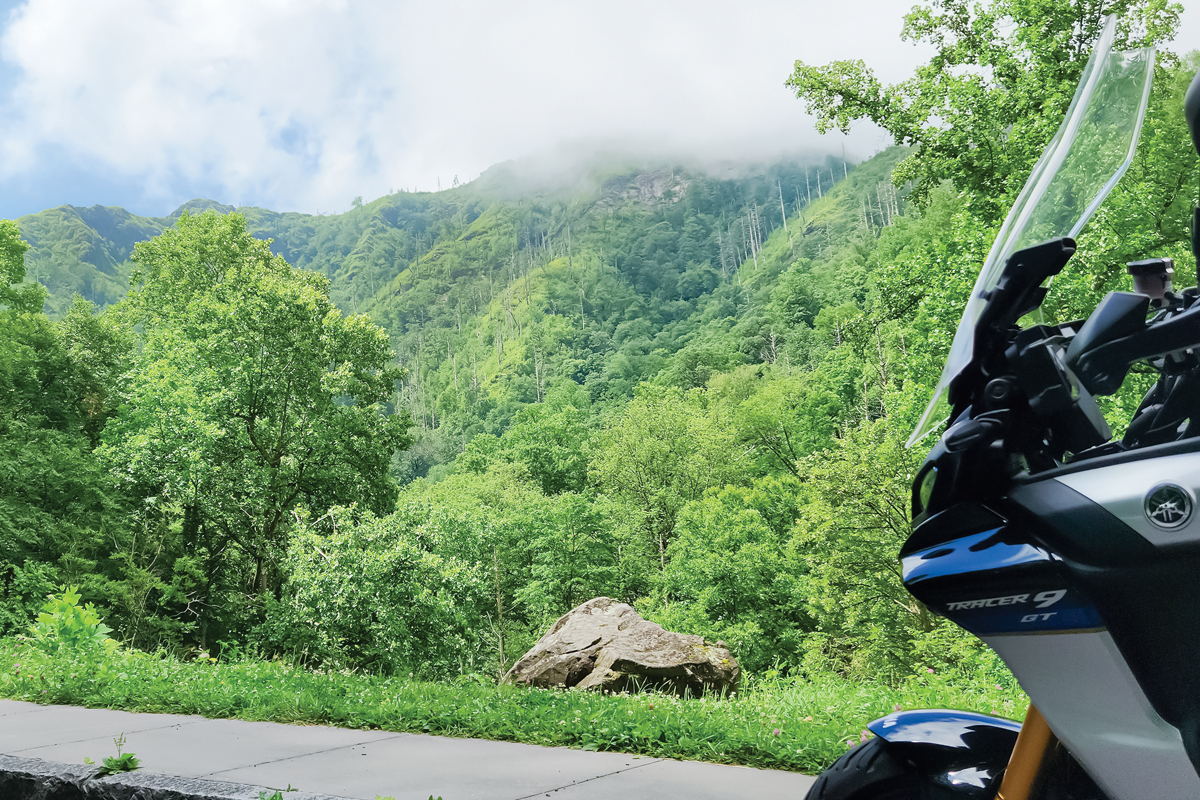
All day I’ve ridden very sedately due to traffic, pedestrians and my leisurely mood. Now, as late afternoon hits, I start to let my three-cylinder Yamaha Tracer 9 howl.
I pause halfway along this short section, just to savor the moment a bit and grab a snack from the tailbag. The woods rustle in the breeze, but otherwise I hear no other sound. A national park maintenance truck slow rolls past me, presumably wondering if I need assistance. I just wave and nod, left alone again on this peaceful, yet thrilling road.
The one aspect of Route 32 that dissuades a lot of motorcyclists is the last mile-and-a-half that turns to gravel as it cuts across the national park. It’s well-maintained and smooth and nothing to fear. I reach Waterville Road, call it an adventure, and jump on I-40 for home.
With a tinge of regret, I briefly consider taking the gravel road directly across the intersection. Mount Sterling Road crosses the Smokies to Cataloochee and Maggie Valley. It makes for a nice adventure ride.
Years ago, I stopped in the little country store at that intersection. As I relaxed with a cold soda, I noticed a sketch of bigfoot on the community bulletin board. Half-jokingly, I asked the proprietor, “Did someone see bigfoot?”
“Oh, yes. My daughter did,” she said.
The story goes she was driving that same gravel road about sunset one day and a huge, hairy creature crossed the road and bounded up the 12-foot embankment with ease.
With joy and excitement, I headed up the gravel road wishing I’d see the legendary cryptid. Alas, I didn’t see so much as a squirrel. Just another reason to return someday.


